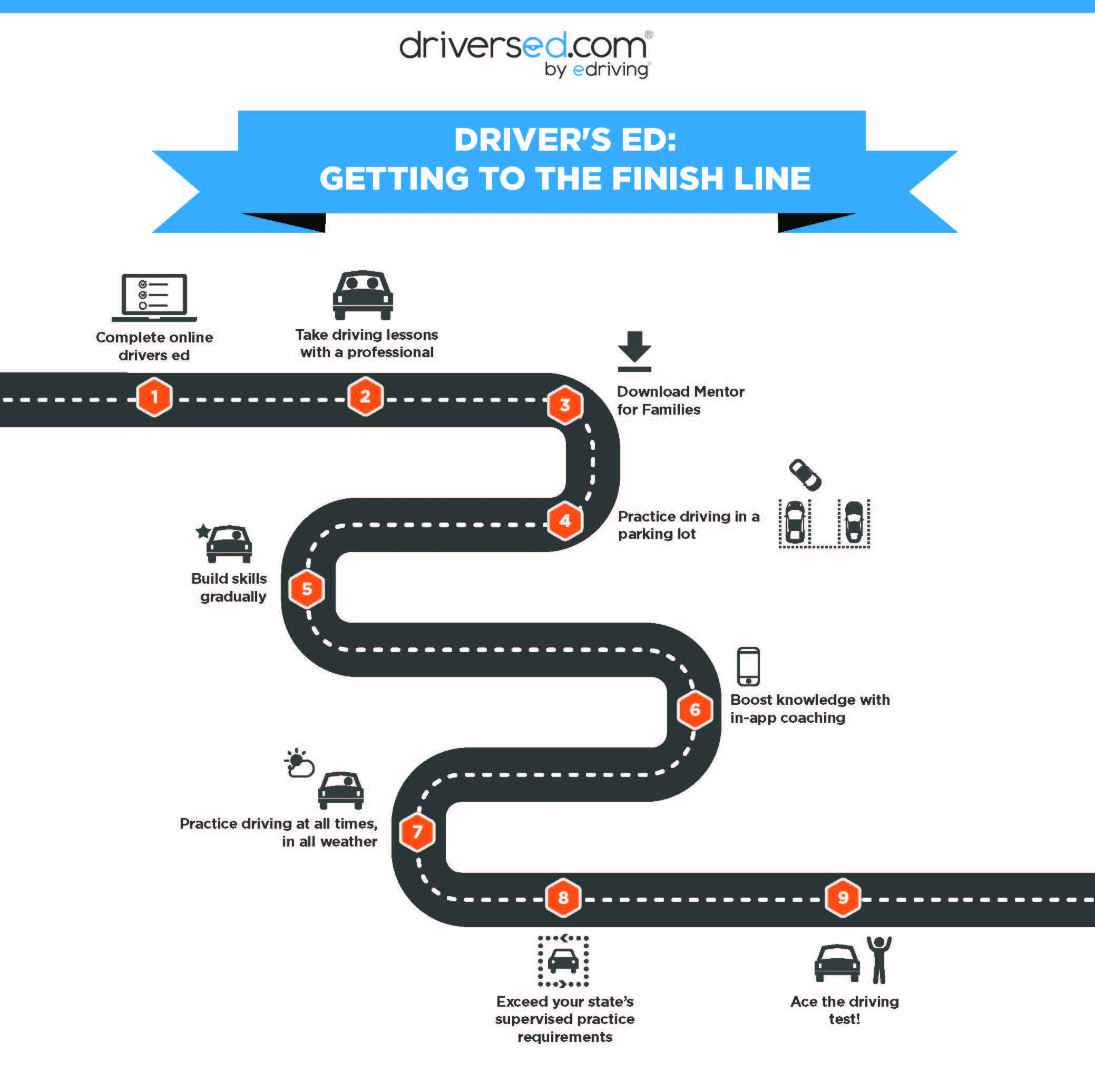News
Reduce the Stress of Supervised Driving Practice with Your Teen with Our Lineup of Resources
Getting your teen to the finish line of their driver’s education training can be a challenge. From classes and studying to tests and practice sessions, much time and effort is involved in training a teenager to be a safe driver. If you’re a parent about to enroll your teen in drivers ed, or have one currently enrolled in a program, know that there are many resources available to make this process as seamless – and as informational – as possible.
Your teen has a required number of hours they must spend practicing driving with an adult, called supervised driving practice. As their parent, you’ll likely be on the hook to help satisfy that requirement. In the road map below, we list the steps we recommend all parents take for a successful supervised driving practice period with their teens.

Step 3 will be the most helpful step for you and your teen. Our new app, Mentor for Families by eDriving, acts as your teen’s own personal driving coach. The app can help you log your teen’s driving hours and keep track of the trips your teen has made. It monitors your teen’s driving skills, such as accelerating, braking, and turning corners, and in turn, recommends in-app training modules to improve upon low-scoring skills.
And, because Mentor is app-based, everything is stored on your teen’s smartphone. That means that you – and your teen – can review their progress at the touch of a screen.
eDriving and DriversEd.com has compiled a slew of information that can help your teen, and even you, become safe(r) drivers:
- Just HOW do parents typically teach teens to drive? A research associate at the University of North Carolina says parents can focus too much on hands-on skills, such as vehicle handling and giving directions. Instead, they need to engage their teens in thoughtful conversations about how to handle specific situations and provide more useful advice, including how to anticipate the behavior of other drivers. Read more of our story here.
- Teenagers with involved parents see drastically lower collision rates than those who don’t. It’s up to YOU to stay current with your teen’s drivers ed process. Start talking to them now about their driving behavior on the road—and don’t forget to check up on your own driving habits. We’re here to help! We talk about six risky driving behaviors teens engage in over on our DriversEd.com blog and explore how you can talk to them about it.
- Learn more about Mentor for Families and download the app. It’s not only great for your teen, but also for you! After you download and begin using the app, it gives you a FICO® Safe Driving Score based on your driving performance. Monitor your own safe driving skills while comparing your score with the rest of your family. Head over to the Mentor for Families page to learn more.